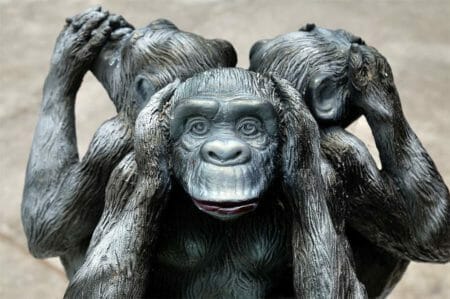
On September 30, 2024, U.S. District Judge Victor A. Bolden upheld Connecticut’s sweeping ban on firearms in state parks and forests, rejecting both facial and as-applied constitutional challenges. The decision in Nastri v. Dykes establishes a dangerous precedent that undermines the Second Amendment and should alarm every law-abiding gun owner.
David J. Nastri, a U.S. Army combat veteran with an unblemished 30-year record of lawful firearm ownership, sought the right to carry for self-defense in Connecticut’s public lands. Judge Bolden ruled that Nastri—and by extension all gun owners—must surrender their rights upon entering a state park or forest.
The ruling is even more indefensible considering Connecticut’s inconsistencies. The state allows hunters to carry high-powered rifles in these same parks, maintains four shooting ranges on public land, and permits .22 handguns for small game hunting. Yet a veteran seeking basic protection is deemed too dangerous.
Rather than apply the Supreme Court’s Bruen standard requiring gun laws to be consistent with the historical tradition of firearm regulation, Judge Bolden engaged in strained reasoning. He began with the premise that “there were no modern style parks around 1791 when the Second Amendment was adopted,” then constructed analogues that critics described as “tortured and circuitous reasoning.”
Even more striking, the court acknowledged that firearm prohibitions in national parks did not appear until 1897 in Yellowstone and were not applied broadly until 1936—long after the founding era that Bruen identified as controlling. By upholding Connecticut’s law anyway, the court revealed its hostility to the Second Amendment.
Judge Bolden leaned heavily on the Second Circuit’s Antonyuk v. James ruling, which anti-gun judges now use to broaden “sensitive places” restrictions. He held that state parks are “quintessentially crowded places” frequented by children and thus qualify as sensitive.
This logic is dangerous. It creates a roaming “sensitive place” doctrine that could apply to nearly any public location—parks, shopping centers, downtown districts, or transit hubs. The Supreme Court rejected exactly this reasoning in Bruen, where it held that there was “no historical basis for New York to effectively declare the island of Manhattan a ‘sensitive place’ simply because it is crowded.” Judge Bolden ignored that guidance.
The court also manipulated standing rules. Although Nastri regularly visits Naugatuck State Forest, the judge ruled he lacked standing because he had not specified “a specific time at which he was going to visit.” This hyper-technical reading makes it nearly impossible for citizens to challenge unconstitutional restrictions before being arrested.
This was not the first time. In July 2023, the district court dismissed Nastri’s lawsuit for lack of standing, even though Connecticut’s Environmental Conservation Police director testified that officers would “take enforcement action if its officers found a person with an unauthorized firearm.” The Second Circuit reversed, but the same procedural hurdles have resurfaced.
The court downplayed enforcement, but testimony shows otherwise. Connecticut’s Environmental Conservation Police made clear they would prosecute anyone found with an unauthorized firearm. While the penalty is a $75 fine and possible one-year eviction from a park, the true danger is a criminal record that could jeopardize future gun rights.
The broader trend is unmistakable. In the post-Bruen era, lower courts have repeatedly upheld gun restrictions by inventing historical analogues. Nastri adds momentum to this effort and normalizes the expansion of “sensitive places.”
If a decorated combat veteran with three decades of lawful gun ownership can be stripped of his rights for simply wanting to visit public lands, no citizen is safe. The precedent invites states to ban firearms in virtually any public setting by labeling it “crowded” or “family-oriented.”
The case also underscores the limits of litigation. Despite years of appeals, Nastri still cannot exercise his rights. Hostile courts exploit standing rules and delay tactics to shield unconstitutional laws from serious review.
The Nastri case will likely be appealed to the Second Circuit, which previously upheld similar restrictions in Antonyuk. That increases the likelihood of an eventual Supreme Court review.
This ruling is also a reminder of the stakes in judicial appointments. Judge Bolden, appointed by President Obama, has authored an opinion that strips a constitutional right while engaging in the very historical manipulation Bruen was designed to stop.
Unless appellate courts intervene, Connecticut’s victory could soon be replicated in states eager to label more public locations as gun-free zones.
Is the Department of Justice Fulfilling Their Role? It’s Time to go ‘Full Speed Ahead!’
About José Niño
José Niño is a freelance writer based in Charlotte, North Carolina. You can contact him via Facebook and X/Twitter. Subscribe to his Substack newsletter by visiting “Jose Nino Unfiltered” on Substack.com.







Yep, the whackadoodle commie “judges” in my state continues to put out another trash ruling upholding another unconstitutional ban. Who’s really surprised?
As Niño says at the end of his article, judicial appointments are paramount to our future liberties. The U. S. Senate needs to stop dicking around with other stupid shit and get the administration’s nominees confirmed. Let Schumer bloviate in the well of the Senate while the Judiciary Committee completes their hearings and forwards the recommendation for confirmation. While Democrats dither on a continuing resolution, nominees can still be confirmed.
Sorrry José, but even though “decorated veterans” deserve our thanks, respect, gratitude and extra points on a job application, they are equals when it comes to our rights.
another scumbag commie in robes ,should be tarred and feathered with yellow feathers
At some point the SC must stop allowing this defiance by states and lower courts to continue. And they must be more specific where states cannot restrict carry because they clearly will try to stretch the meaning of sensitive places well beyond what it might ever have been intended for. In fact, an entirely new standard needs to be implemented regarding where carry can be restricted, if at all.
lf this were the 1700’s, we’d be reading about this judge being tarred and feathered.
Can you speak in a park? Pray? Post to your blog? Rights are rights on every square-inch of U.S. soil!
Our great leaders can do better than this. Should we?
HLB